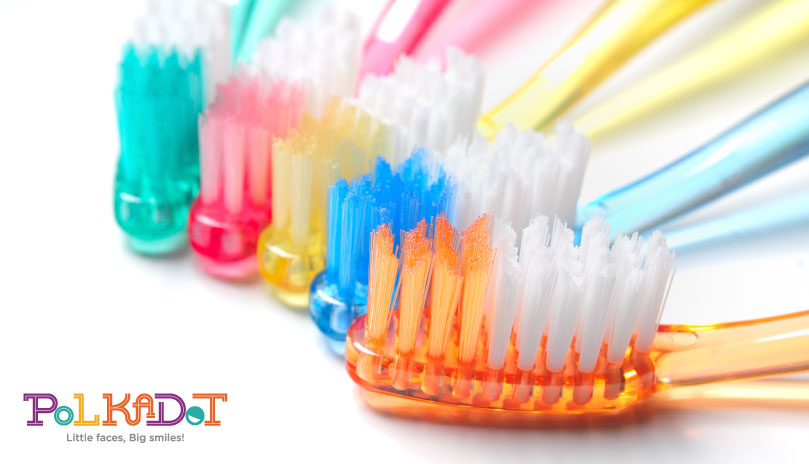Oral hygiene
Things You Should Know All About Toothbrushes
Babies are as prone to cavities and infections as an adult. The only real difference is that babies can’t brush their teeth. Because of this, parents oversee cleaning their child’s teeth for the first decade of their lives. In extreme cases, Failure to do so properly could end up in infection and tooth loss.
What’s the History of the Toothbrushes?
The first versions of the toothbrush are way older than what you may expect. The oldest evidence we have of toothbrushes comes from the ancient Egyptians and Babylonians somewhere between 3500 – 3000 B.C. Back then, they made them with ends of twigs that they then flayed. Later on, around the 1400s, the Chinese made the first variation of a toothbrush that had natural bristles made from pig’s hair and a handle made out of bone or bamboo.
The inventor of the toothbrush, as we now know it, is William Addis. He also used pig bristles that he then added to a special handle made from cow bone. In 1844, the design evolved to a 3-row bristle brush. It was until the 1950’s that soft nylon bristles were introduced and preferred in the market.
When Should a Child Start Brushing Their Teeth?
A child should start brushing their teeth at around 6 years old. By then, they should already have enough dexterity to brush their teeth completely without missing any spot. To get to this point, however, the parent should have already been leading by example since the child’s first tooth grew out. Don’t worry if your child takes longer to brush their teeth on their own; it’s normal for kids to learn how to do it properly at around 9 years old.
Remember that your kid’s dental health is priority number one. If you see that they aren’t capable of brushing their teeth properly, don’t let them do it alone.
How Can I Make My Child Brush Their Teeth?
Start by both building a routine and teaching them by example. It is very common for kids to learn skills by copying someone doing it first, so, if possible, give them the correct example. You can do this by making your child be with you whenever you brush your teeth. They’ll eventually start to copy your actions on their own accord and, if you are consistent, they will also develop a habit out of it, which will in turn make them brush their teeth even without you telling them.
You can also try entertaining your children while they are brushing. You can try telling them a story while they are at it, or you can use one of the many smartphone apps that transform brushing into a game for your kids to enjoy.
How Often to Change Toothbrushes?
According to the Centers for Disease Control and Prevention (CDC), you should change your toothbrush every 3 to 4 months. If you notice that the bristles in your toothbrush lose their stiffness or are noticeably worn, consider changing them as well. Once a toothbrush loses its shape and stiffness, they aren’t as effective as they once were. If you were sick recently and share a toothbrush holder with other people, you should also consider changing it.
There’s no need to worry if your child’s toothbrush seems to wear out faster than yours. Kids usually apply more force than needed when brushing their teeth, causing their toothbrushes to wear out quicker.
What Toothbrush Is Good for Kids?
When looking for a toothbrush that’s good for your child, you have to consider how comfortable they are when handling the tool. Search for soft-bristled toothbrushes. The low resistance of the bristle will be able to clean your kid’s teeth without irritating their mouths. Consider getting a toothbrush with a small head and handle. A smaller head on a toothbrush allows for more mobility and comfort in a small mouth. Similarly, the handle has to be thin enough for your kid to handle without problems.
How to Clean a Toothbrush Correctly?
Most people think that rinsing their toothbrush with water after each use is enough to kill and prevent bacteria build-up. In reality, even after rinsing your toothbrush, microorganisms can grow on your toothbrush’s handle and bristles, and, in some extreme cases, it can lead to infections.
To prevent issues, you can try soaking your toothbrush in mouthwash or denture cleaner. You could also use UV light to sanitize the product; just remember not to boil your toothbrush as it could deform the plastic tool entirely. Remember that you should also store your toothbrush properly to avoid more microorganisms and keep them clean.
Get Help From Your Johns Creek Pediatric Dentist
If you have questions regarding proper oral health for you or your children, you can contact us at Polkadot Pediatric Dentistry here. If you wish to make an appointment with us, you can schedule one here.


